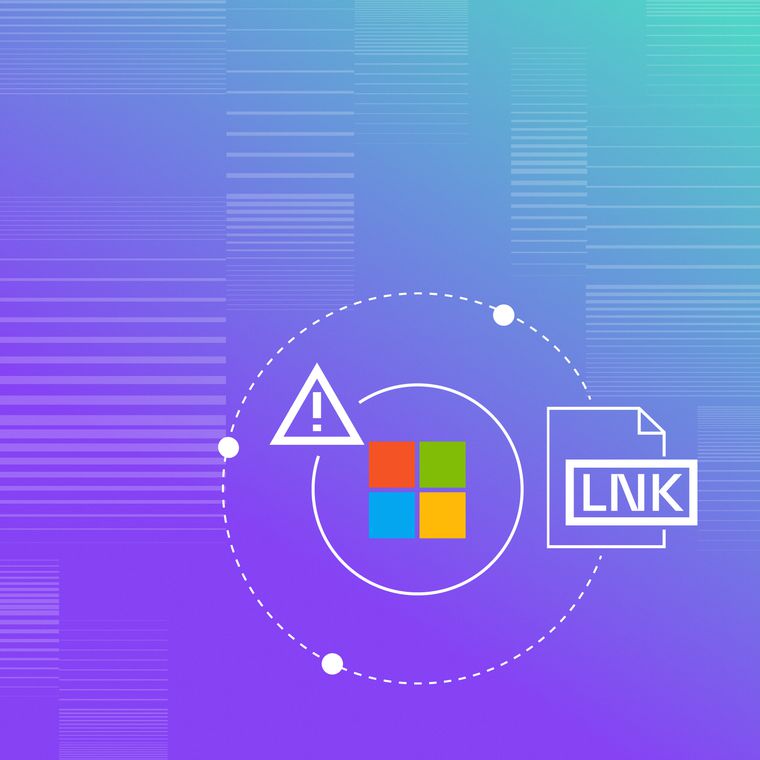Slack eDiscovery Demystified: 10 Best Practices for Bulletproof Legal Compliance
Master Slack eDiscovery with compliance-ready best practices for data governance.
July 20, 2025
Seemingly casual Slack communications have become critical evidence in high-stakes litigation. Federal courts consistently hold that collaboration platforms constitute discoverable business records under the Federal Rules of Civil Procedure (FRCP); every message, emoji, thread, and file share carries the same evidentiary weight as traditional email. Judges impose sanctions on organizations that fail to properly preserve and produce chat data.
Slack’s architecture challenges traditional email-based eDiscovery processes. Important conversations occur across multiple channels, including direct messages and external workspaces, with key context often found in threaded discussions and reactions, which can significantly influence case results.
To address this, organizations need a clear framework for managing collaboration platforms. This includes mapping workspace structures, aligning retention policies with regulations, tracking real-time data changes, enforcing robust access controls, and utilizing Slack’s Discovery API for comprehensive data collection. These ten best practices transform Slack from a compliance vulnerability into a source of defensible, comprehensive evidence.
1. Understand Your Slack Data Landscape
You need a complete map of all Slack content because courts treat it as discoverable evidence. The preservation scope must include all channels, DMs, threads, files, and rich media. Remember, reactions, emojis, and mentions can significantly alter the meaning of a message. Therefore, you need to track message edits and ephemeral content that users assume disappears.
The metadata layer, which includes timestamps, user IDs, and channel IDs, provides crucial context that email discovery often overlooks.
Unlike email's linear format, Slack captures rapid conversations and informal dialogue across fragmented spaces, making isolated keyword searches unreliable.
To begin, you can start inventorying your environment with these steps:
Document all workspaces, channels, and external connections
Map custodians to their direct messages
Identify third-party apps storing content
Next, prioritize business-critical areas like product roadmaps, executive DMs, and deal rooms for continuous archiving. Keep in mind that 'too hard' isn't a valid defense and it's essential to preserve all relevant content, even if access is challenging or there’s a risk of spoliation claims.
2. Establish Clear Data Retention Policies
Align retention settings with statutory timelines, document decisions, and test configurations regularly to prevent spoliation. Here’s how you can go about it:
Map Retention Windows to Regulations
Regulators tie retention periods to data sensitivity, not storage method. SOX requires seven years for financial records, HIPAA needs six years of documentation, and GDPR limits to "as long as necessary."
For chats containing regulated information, retention begins when that data is generated. Create a written matrix that pairs data classes with regulatory requirements to prevent ad-hoc decisions that courts may view as negligent.
Configure Native Controls and Know the Gaps
Paid plans allow workspace or channel-level policies with exceptions for legal holds. Native controls have limitations: free plans cap visibility at 90 days, exports omit deleted content, and there's no immutable archive. Third-party platforms address these gaps with real-time capture and WORM storage.
Document, Review, and Defend Your Policy
Publish your policy with regulatory citations and rationales. Automate change-logging and conduct quarterly reviews. Combining technical enforcement with documentation creates a defensible posture against regulatory inquiries and discovery challenges.
3. Use Enterprise-Grade Archiving and Backup Solutions
Professional-grade archiving captures fast-moving conversations in a defensible format, as native exports simply don't go far enough. Let’s learn the steps of doing this in the right manner:
Recognize Native Export Gaps
Built-in exports fail litigation needs. Free plans provide only 90 days of public-channel data, excluding private channels and DMs. Enterprise Grid exports arrive as raw JSON without threading or file binaries, requiring manual reconstruction. Large workspaces face slow, manual downloads with no automation, creating spoliation risks courts won't overlook.
Define Archiving Requirements
Enterprise archives must meet several critical standards to ensure compliance and security. They should offer tamper-evident storage, adhering to regulatory requirements such as SOX and HIPAA. Additionally, they must capture complete metadata, including timestamps, user IDs, reactions, and edit history, to maintain a comprehensive record.
Granular legal holds are essential, as they allow overrides of deletion rules to preserve key data during investigations. Automated exports should be available in review-ready formats, such as HTML, PDF, and load files, facilitating easy access and analysis.
These standards align with established eDiscovery frameworks and regulatory expectations, ensuring that the archive remains both secure and compliant.
Capture Context in Real Time
Messages can be edited or deleted seconds after posting. Modern platforms connect through the Discovery API to stream content continuously, preserving conversation context and every change. This real-time capture scales to thousands of channels while maintaining each emoji, file version, and edit exactly as they appeared.
4. Implement Access Controls and Audit Trails
A defensible eDiscovery posture requires strict access controls and verifiable action records. Here’s what you need to remember:
Define Clear Access Privileges
Courts reject technical difficulty as a defense. Determine in advance who will be responsible for preserving, collecting, and reviewing content. Limit privileges to the smallest necessary group with clearly defined roles. This minimizes spoliation risks and simplifies investigations.
Establish Chain of Custody Documentation
Create documented custody chains from the point of legal hold through to production. Use the Audit Logs API to capture deletions, permission changes, and exports in real-time. Export these logs to correlate cross-system actions.
Maintain Comprehensive Audit Logs
Each preservation, collection, and review step needs tamper-evident, timestamped logs. Capture metadata alongside messages to confirm authenticity.
Protect Data Throughout the Process
Encrypt exports, implement multi-factor authentication, and segment preserved data. Regularly review access permissions when staff roles change. These practices provide regulators with defensible evidence handling documentation, protecting against spoliation claims.
5. Train Your Team on eDiscovery Readiness
eDiscovery fails when employees don't understand their legal duties. Embed training into everyday workflows by following these steps:
Define Roles and Responsibilities
Tailor training for each role. For instance, legal issues dictate and select preservation tactics; IT manages retention overrides and API access; Compliance monitors policy adherence; and end users preserve relevant messages.
Courts treat messages as evidence. Therefore, you need to demonstrate through case studies how technical difficulties do not excuse missing data. Additionally, deliver role-based modules within the platform to enhance user retention.
Run Simulations and Document Everything
Conduct quarterly exercises using realistic triggers, such as investigations or lawsuits. Time each step from the hold notification to producing audit logs. Next, record metrics and friction points, and then store the results along with policies to demonstrate continuous improvement.
Maintain training evidence through logs and acknowledgments, creating a living program that evolves in response to platform changes.
6. Leverage Slack's Discovery API and Native Features
The Discovery API provides comprehensive, auditable access to message content that meets regulatory requirements.
Enterprise Grid owners can stream all messages, files, edits, and deletions with complete metadata through the Discovery API. OAuth scopes restrict access, while all requests are logged to satisfy certain requirements. Most organizations feed this data directly into eDiscovery platforms for searching and legal holds.
Additionally, native export options vary by plan: Free workspaces have access to only 90 days of public channels; Business+ users can request limited private exports; and Enterprise Grid offers self-serve exports, but delivers JSON files that require additional processing.
It’s also important to document your workflow and validate that exported data maintains defensible conversation context.
7. Prepare for Legal Holds and Data Collection Requests
Legal holds must be immediate, well-documented, and repeatable to meet the FRCP. Therefore, create a platform-specific playbook with clear steps, including notification templates and escalation paths.
Courts have ruled against parties blaming "technical difficulty" for lost evidence; as a result, define triggers to initiate holds within hours. Your policy should clearly specify who is authorized to place holds, configure settings, and track progress.
Furthermore, even small delays can lead to spoliation claims. Use in-place preservation on Enterprise Grid to bypass retention rules without exporting data. When necessary, collect data via the API to retain metadata and conversation threads.
Additionally, document custodians, channels, and timeframes under each hold, and keep audit logs for tracking. Once cases conclude, release holds through a sunset process to avoid unnecessary costs and regulatory risks. Ultimately, these practices ensure defensible preservation while maintaining collaboration.
8. Collaborate Closely with Legal and IT Teams
Effective eDiscovery requires unified legal and technical execution from the moment a matter surfaces. Legal, IT, and compliance each perform distinct yet interlocking tasks, functioning as a single, integrated unit rather than siloed specialists. Here are the steps to take:
Establish a standing response team with a clear charter and established escalation path.
Develop a cross-functional playbook defining triggers and establishing clear authority, with time-boxed objectives for preservation and collection.
Standardize terminology so all teams discuss identical artifacts.
Document hand-offs in a shared runbook accessible to all stakeholders.
Schedule regular coordination sessions and use real-time dashboards to maintain visibility across teams.
When legal and IT move in lockstep, you meet deadlines and present airtight evidence without last-minute crises.
9. Regularly Review and Update eDiscovery Procedures
Validation through regular testing proves your workflows function correctly before litigation demands them.
Run Frequent End-to-End Mock Exercises
Schedule full-scope simulations twice yearly. Place legal holds on selected custodians, collect messages via the Discovery API, and produce sample load files. These rehearsals highlight gaps that static documentation might overlook, such as missing permissions, new channels, or external integrations that store data.
Track Results in Immutable Audit Logs
Log every test action, including timestamps and user IDs, in tamper-evident repositories to demonstrate a chain of custody. Courts expect verifiable evidence that procedures were followed. These logs also help calculate cycle time and justify budget needs.
Iterate with Regulatory and Platform Updates
Compare findings against current FRCP guidance after each mock. Update settings when Slack ships new features or regulations change. Document your rationale, and a defensible program evolves continuously to ensure your next case runs smoothly.
10. Consider Third-Party eDiscovery and Compliance Tools
Third-party platforms close native preservation gaps, delivering defensible, context-rich collections at enterprise scale. Native exports provide only JSON files, excluding private messages and stripping conversational context. Specialized tools ingest all content through the Discovery API, reconstructing threads with metadata intact.
Also, do look for integrations with SIEM, DLP, and case-management systems that provide a unified chain of custody. Additionally, open APIs enable the direct streaming of preserved conversations into existing systems, streamlining the process. Modern solutions further enhance compliance by offering AI-powered monitoring that instantly flags policy breaches.
When evaluating options, compare cloud services (with per-user pricing) to appliance-based tools (which involve upfront costs). To ensure performance meets your needs, run pilots before making a commitment. Lastly, insist on transparent audit trails that log every action, ensuring the solution can withstand rigorous scrutiny in the courtroom.
Take Action on Slack eDiscovery Today
Comprehensive preparation is key to preventing costly sanctions and positioning your organization for a swift legal response. Start by mapping every workspace, enforcing retention policies aligned with regulations, capturing data in real time, and documenting each step of the chain of custody. These proactive measures transform workplace chat from a potential discovery liability into a defensible source of evidence.
Courts treat messages as potential evidence in liability cases, expecting the same diligence applied to emails, preserving relevant content, maintaining context, and ensuring swift production of evidence. Ad-hoc exports or ignored private channels only invite spoliation claims, which judges often view harshly.
A well-planned, proactive approach delivers far better outcomes than reactive crisis management. With a documented playbook, regular readiness tests, and purpose-built archiving tools, you can reduce review time, lower storage costs, and keep your legal team focused on strategy rather than scrambling for missing files.
By continuously adapting to evolving APIs and features, you ensure that today's defensible workflow doesn’t turn into tomorrow's compliance gap.
Audit your environment, update your policies, and collaborate with your legal and IT teams to build a defensible posture. Begin the process now before the next subpoena arrives.
Start securing your Slack environment today. Book a demo to learn how Abnormal can help you streamline and strengthen your security posture.
Related Posts
Get the Latest Email Security Insights
Subscribe to our newsletter to receive updates on the latest attacks and new trends in the email threat landscape.


